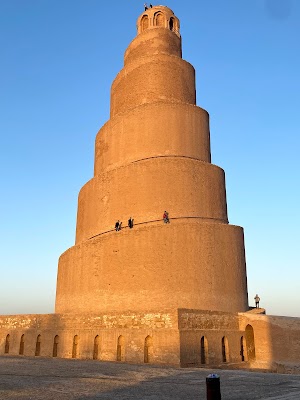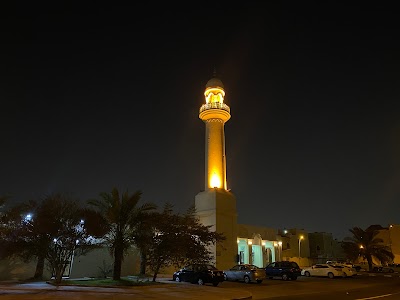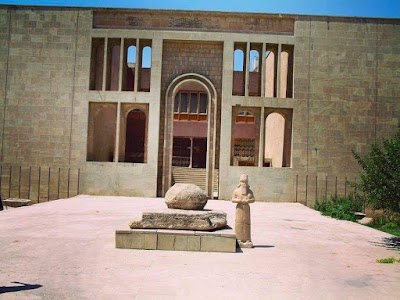Great Mosque of Samarra (المسجد الكبير في سامراء)
Overview
The Great Mosque of Samarra, nestled in the heart of Iraq's Saladin Province, stands as a timeless testament to the architectural prowess and grand vision of the Abbasid Caliphate. Constructed in the 9th century, specifically between 848 and 851 AD, by the Abbasid Caliph Al-Mutawakkil, this mosque is renowned for its unique design and historical significance, captivating the interest of historians, archaeologists, and tourists alike.
Your journey to the Great Mosque begins with the striking Malwiya Minaret, which towers majestically to a height of approximately 52 meters (170 feet). Unlike traditional minarets that are slender and cylindrical, the Malwiya Minaret features an iconic spiral structure, resembling a massive helix of brickwork. This distinctive design was crafted not only for its aesthetic appeal but also for practicality; the spiral ramp allowed the muezzin to ascend to the top to call the faithful to prayer, a practice that resonated across the expansive courtyard below.
The mosque itself covers an immense area, measuring around 240 meters in length and 160 meters in width, making it one of the largest mosques of its time. Although much of the mosque's structure has succumbed to the ravages of time, its grandeur remains palpable. The remnants of its vast courtyard and the colonnaded prayer hall, once filled with worshippers, offer visitors a glimpse into the mosque’s past splendor. Fortifying the outer walls are 44 semi-circular towers, a testament to the mosque’s dual function as both a place of worship and a structure of defense.
Historically, the Great Mosque of Samarra is of paramount importance. At the time of its construction, Samarra was the capital of the Abbasid Caliphate, a period marked by political upheaval and architectural advancements. The mosque was not just a religious edifice; it symbolized the Abbasid Caliphs' power and their patronage of the arts and architecture. Notably, the choice of Samarra as the site for such a monumental mosque highlights the city’s significance during the Abbasid period, with the mosque itself acting as a focal point for religious and social activities.
Visitors will find the surrounding areas of the mosque equally captivating. The city of Samarra is home to numerous other historical sites, including the Abu Dulaf Mosque, the Al-Askari Shrine, and various ancient palaces, all contributing to a rich tapestry of history that reflects the glory of its bygone eras. Declared a UNESCO World Heritage Site in 2007, the cultural significance of Samarra ensures that the Great Mosque and its surrounding monuments receive the protection they deserve.
Among the intriguing facts about the Great Mosque of Samarra is its profound influence on Islamic architecture. The spiral minaret, in particular, inspired various similar structures throughout the Islamic world, signifying the far-reaching impact of Samarra's architectural innovation. Additionally, the mosque’s unique design elements, such as its vast size and fortified walls, have been subjects of extensive study, offering insights into the technological and artistic achievements of the Abbasid period.
For those captivated by the intersection of history, architecture, and religion, the Great Mosque of Samarra offers an unparalleled journey through time. It invites visitors to walk the same grounds that countless devotees once trod, to marvel at an architectural wonder, and to reflect on the enduring legacy of a civilization that once dominated the Islamic world. Despite the challenges posed by global and local developments, Samarra remains a beacon for scholars and travelers—a place where the past seamlessly converges with the present.
In conclusion, the Great Mosque of Samarra is more than just a historical monument; it represents human ingenuity, spiritual devotion, and the enduring legacy of the Abbasid Caliphate. Whether you are a history buff, an architecture enthusiast, or simply a curious traveler, a visit to this magnificent site promises an enriching experience that captures the essence of Iraq’s illustrious heritage.





